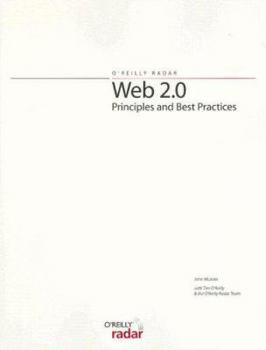Web 2.0 Principles and Best Practices (O'Reilly Radar)
No Synopsis Available.
Format:Paperback
Language:English
ISBN:0596527691
ISBN13:9780596527693
Release Date:November 2006
Publisher:Oreilly & Associates Inc
Length:101 Pages
Weight:0.65 lbs.
Dimensions:10.8" x 0.3" x 8.3"
Customer Reviews
1 rating
A Strong Business Case for Web 2.0
Published by Thriftbooks.com User , 18 years ago
In O'Reilly's Web 2.0 Principles and Best Practices, Tim Musser provides a robust overview of the current online era--what has become known as Web 2.0--from the publisher that coined that term in 2004. In the publication, Musser presents a strong business case that user-centric internet applications drive revenue and brand equity. He lays out eight "core patterns" that are driving the online ecosystem and provides insightful analysis for each. This read is great for anyone wanting to look deeper into why Flicker is so addictive, or why Google would pay so much for YouTube. It is a text that is informed by current business trends/financials as well rooted in digital theory. After I read this publication and truly considered the responsive, flexible applications that Musser holds up as examples of Web 2.0 implementation, it is apparent to me that the "wild west" days of spaghetti coding and application specific development are coming to an end, if not already gone. While valuable applications may be written this way in the future, it is quite possible that a more nimble "me too" competitor would become the market leader simply because it was built using well structured code. Developing nimble applications using good, solid class based object oriented methodologies and allowing other programmers contribute to your application's growth isn't just smart, it's imperative. Web 2.0 Principles and Best Practices puts being a web application developer, or an internet professional in general into excellent social context.






